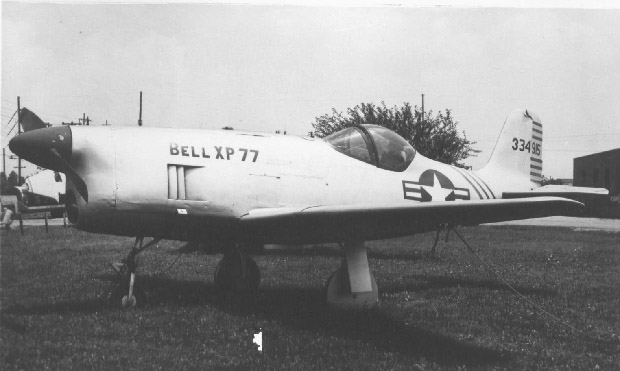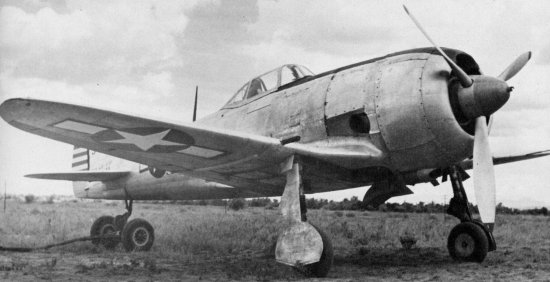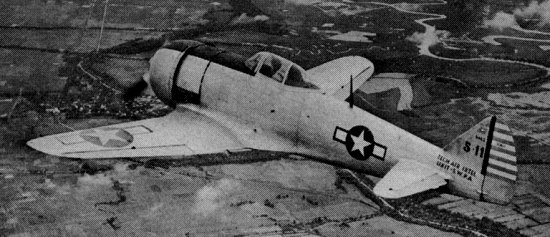[font=tahoma, calibri, verdana, geneva, sans-serif]Number of units built , three gliders MX-334. The MX-334 # 2 will be further equipped with a rocket engine and redesignated MX-324.[/font]
[font=tahoma, calibri, verdana, geneva, sans-serif]Main construction material : wood (structure of the front section of welded steel tubes).[/font]
[font=tahoma, calibri, verdana, geneva, sans-serif]General Requirements: The MX-334/324 was a flying wing to overcome the back of a vertical stabilizer (multiple configurations and dimensions drifts were tested) and equipped with aerodynamic trailing edge (two elevons and two rudders crocodile ). The driver was lying on his stomach in the body, head forward.[/font]
[font=tahoma, calibri, verdana, geneva, sans-serif]The first MX-334 used a four-wheeled trolley for take-off and landing skis. The other two MX-334 were equipped with tricycle landing gear. The MX-334 was a glider towed by a Lockheed P-38 Lightning. The MX-324 also used the P-38 for takeoff and climb in altitude. He then detached the tow rope and lit its rocket engine for powered flight.[/font]
[font=tahoma, calibri, verdana, geneva, sans-serif]MX-324 engine : a rocket engine Aerojet General XCAL-200 90 kg of thrust, burning a mixture of fuming nitric acid (oxidizer) and monoéthylaniline (fuel).[/font]
[font=tahoma, calibri, verdana, geneva, sans-serif]Maximum speed of the MX-324: 480 km / h.[/font]
[font=tahoma, calibri, verdana, geneva, sans-serif]Project timeline:[/font]
[font=tahoma, calibri, verdana, geneva, sans-serif]September 15, 1942 : Northrop submits readily to the USAAF P-999 project on an interceptor driven and inspired work in Germany ( 176 Heinkel and Messerschmitt 163 Komet ). This is a flying wing powered by a rocket engine thrust of 910 kg (XCAL-2000). The project was accepted by the Air Force under the designation XP-79.[/font]
[font=tahoma, calibri, verdana, geneva, sans-serif]December 1942 : the construction of three flying models MX-324/334 scaled the XP 79 is determined to validate the aerodynamic configuration in flight and engine planned for the interceptor.[/font]
[font=tahoma, calibri, verdana, geneva, sans-serif]Late spring 1943 , the first glider MX-334 is finished and headed the laboratory of NACA, Langley (Virginia), to be tested in a wind tunnel.[/font]
[font=tahoma, calibri, verdana, geneva, sans-serif]September 4, 1943 : the first hop of the MX-334 # 2 in Muroc (pilot Harry Crosby), towed by a truck.[/font]
[font=tahoma, calibri, verdana, geneva, sans-serif]October 2, 1943 : First flight of the MX-334 true # 2 in Muroc (pilot John W. Myers). towed by a P-38. Total time: twenty minutes.[/font]
[font=tahoma, calibri, verdana, geneva, sans-serif]November 9, 1943 : First flight of the MX-334 # 3 in Muroc (pilot Harry Crosby), towed by a P-38.[/font]
[font=tahoma, calibri, verdana, geneva, sans-serif]November 10, 1943 : Second and last flight of the MX-334 3. The glider caught in the turbulence of the P-38 is destabilized. Driver (Crosby) manages to extract the carrier and parachute, while his plane crashed to the ground.[/font]
[font=tahoma, calibri, verdana, geneva, sans-serif]November 30, 1943 : First flight of the MX-334 No. 1 at Muroc (pilot Harry Crosby).[/font]
[font=tahoma, calibri, verdana, geneva, sans-serif]June 20, 1944 : early ground testing of the MX-324 (ex-334 MX-2) equipped with a rocket engine at Harper Lake (California).[/font]
[font=tahoma, calibri, verdana, geneva, sans-serif]July 5, 1944 : first ignition of the rocket motor MX-324 (pilot Harry Crosby), at an altitude of 2440 m. Duration of powered flight: five minutes maximum speed: 400 km / h. First flight of a U.S. rocket plane.[/font]
[font=tahoma, calibri, verdana, geneva, sans-serif]July 11, 1944 : second powered flight MX-324 (pilot Harry Crosby).[/font]
[font=tahoma, calibri, verdana, geneva, sans-serif]August 1, 1944 : Project abandonment MX-334/MX-324 (causes: limited performance rocket motor XCAL-200-2000 XCAL abandoned for propulsion duXP-79).[/font]
[font=tahoma, calibri, verdana, geneva, sans-serif]Drivers : John W. Myers, Harry Crosby and Alex Papana (Northrop).[/font]
[font=tahoma, calibri, verdana, geneva, sans-serif]Museum: a priori, the MX-334 No. 1 and MX-324 were destroyed. Other sources claim that the MX-324 would be in the reserves of the National Air and Space Museum[/font]
[font=tahoma, calibri, verdana, geneva, sans-serif]· · Dimensions: 1980 x 889 · [/font]



